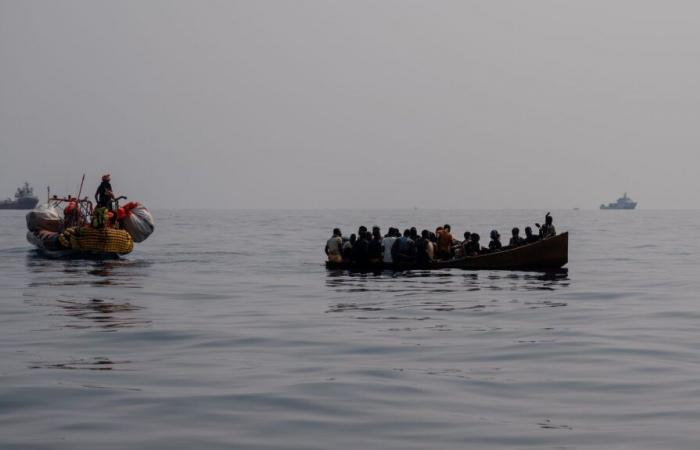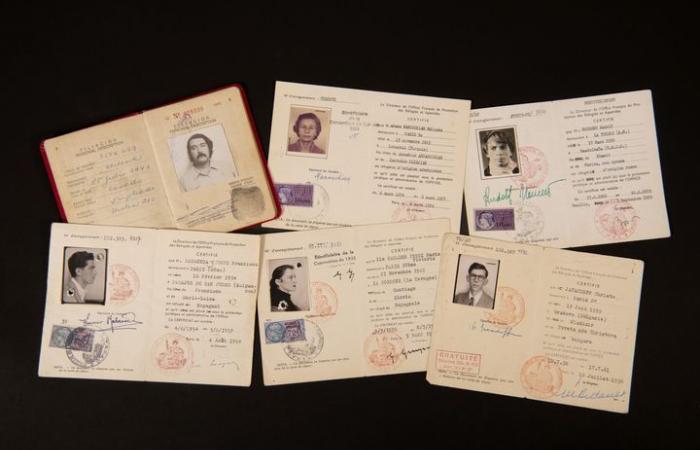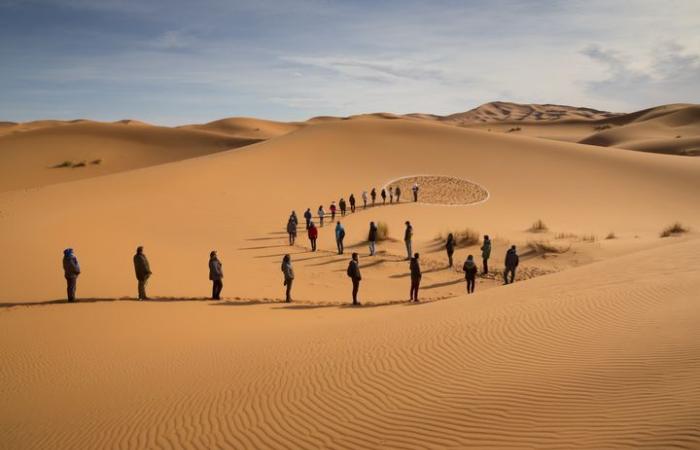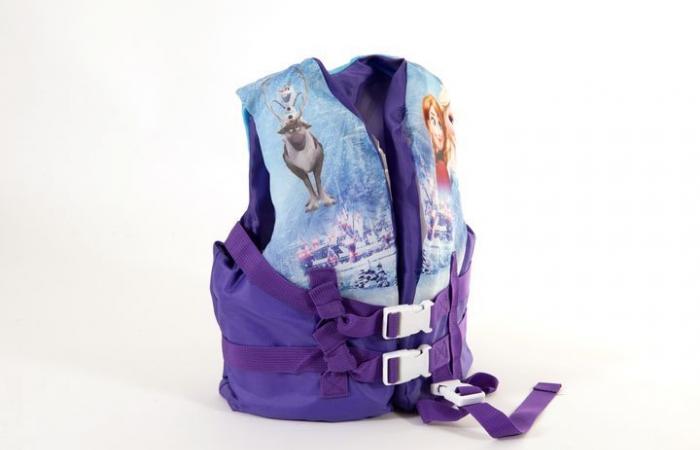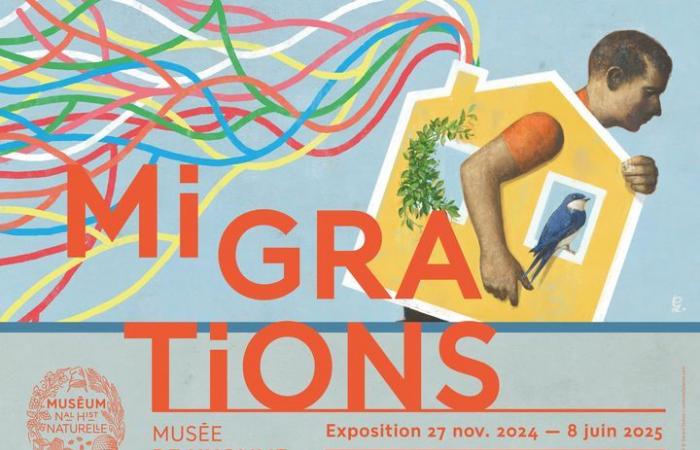From the arrival of Homo sapiens in Europe to the appearance of kebabs in French streets, millennia of migrations have shaped the history of humanity. To break stereotypes and shed light on these movements, the Musée de l’homme, place du Trocadéro, in Paris, is offering the exhibition “Migrations, a human odyssey”visible from November 27, 2024 to June 8, 2025.
Through the latest scientific research, works of art and poignant testimonies, she explores this complex phenomenon which fuels debates and preconceived ideas.
In the first room of the exhibition, the tone is set. The walls, decorated with maritime transport pallets, immediately evoke migration. In the center, a striking work by Spanish photographer Cristina de Middel welcomes visitors: a powerful image of a migrant, cape in the wind, represented as a superhero. This photograph, which stays with you throughout the exhibition like a common thread, immediately poses a crucial question: what are our views on migration?
Without seeking to idealize or simplify the subject, the curators, in partnership with scientists, offer an exploration that is both fun and enriched by numerical data and archives, to address this complex and protean phenomenon.

The first part focuses on the terms we use, because migration is above all a question of language. Who can really precisely define the difference between immigration, migration and emigration? Each word reveals a unique facet of an experience that is both universal and deeply personal.
Visitors are invited to explore the unique journeys that shape each existence. Like famous figures like Maria Casarès, Mélinée Manouchian or Rudolf Nureyev, these stories mingle with those of anonymous people. Rosa, a Syrian engineer specializing in risk prevention, having passed through Guyana before settling in mainland France, and Diallo, originally from Mali, arrived in France at 16 after fleeing family difficulties and crossing the Mediterranean via the Algeria and Spain embody the link between extraordinary trajectories and ordinary lives. These captivating stories are revealed through videos retracing each step of their journey.
These testimonies illustrate the diversity of journeys: the reasons for leaving, the challenges of integration, and the tragedies that mark these journeys. These stories remind us that the migratory experience is multiple and that we cannot reduce this phenomenon to stereotypes. They also show how views on migration differ depending on origins or circumstances.

And scientists point out that migration is a physical movement, but not only that. The men were moving, moving and will move again. “In migrant, there is the suffix -ant, which suggests the present participle, that is to say the movement which continues, a continuity”underlines Sylvie Mazzella, sociologist specializing in immigration and scientific director of the exhibition.bTo deconstruct preconceived ideas and avoid clichés, the exhibition uses simple diagrams and striking visual representations.
The small colorful characters arranged around a planisphere illustrate this distribution and highlight a reality which contradicts hate speech: 4% of the planet’s inhabitants do not live in the country where they were born. By reversing the figure, the sociologist argues “in other words, 96% of people live in the country in which they were born. A figure can change the perception and scale of the phenomenon.”


The exhibition strikes the mind by relying on images and objects of striking force, such as a life jacket bearing the image of The Snow Queentragic symbol of an intergenerational drama in a globalized world. By combining visual pedagogy and contextualized figures, it sheds light on migration as a universal phenomenon, rooted in the history of humanity, while deconstructing the preconceived ideas often conveyed.
A video traces migrations since the Neolithic, highlighting how human movements, since the “exit from Africa”have enriched societies with innovations, new ideas and invaluable cultural heritage. By mixing popular culture and anthropology, the exhibition weaves a fascinating journey, from the Neanderthal milk tooth unearthed in Charente to the captivating and syncretic voice of Cesaria Evora. It reveals the intertwining of civilizations and the depth of time, emphasizing that human history is a complex fabric where each individual carries within them the imprints of past migrations.
The last room celebrates the cultural contributions linked to migration. Objects and images bear witness to these fruitful exchanges: an 18th-century engraving of Chilean strawberries stands next to a kebab spit or a life-size Hawaiian pizza. These examples, which combine anthropology and pop culture, remind us that our societies are built on constant flows of ideas and practices.

“Migration, a human odyssey”, until June 8 2025, at the Museum of Man, in Paris.

